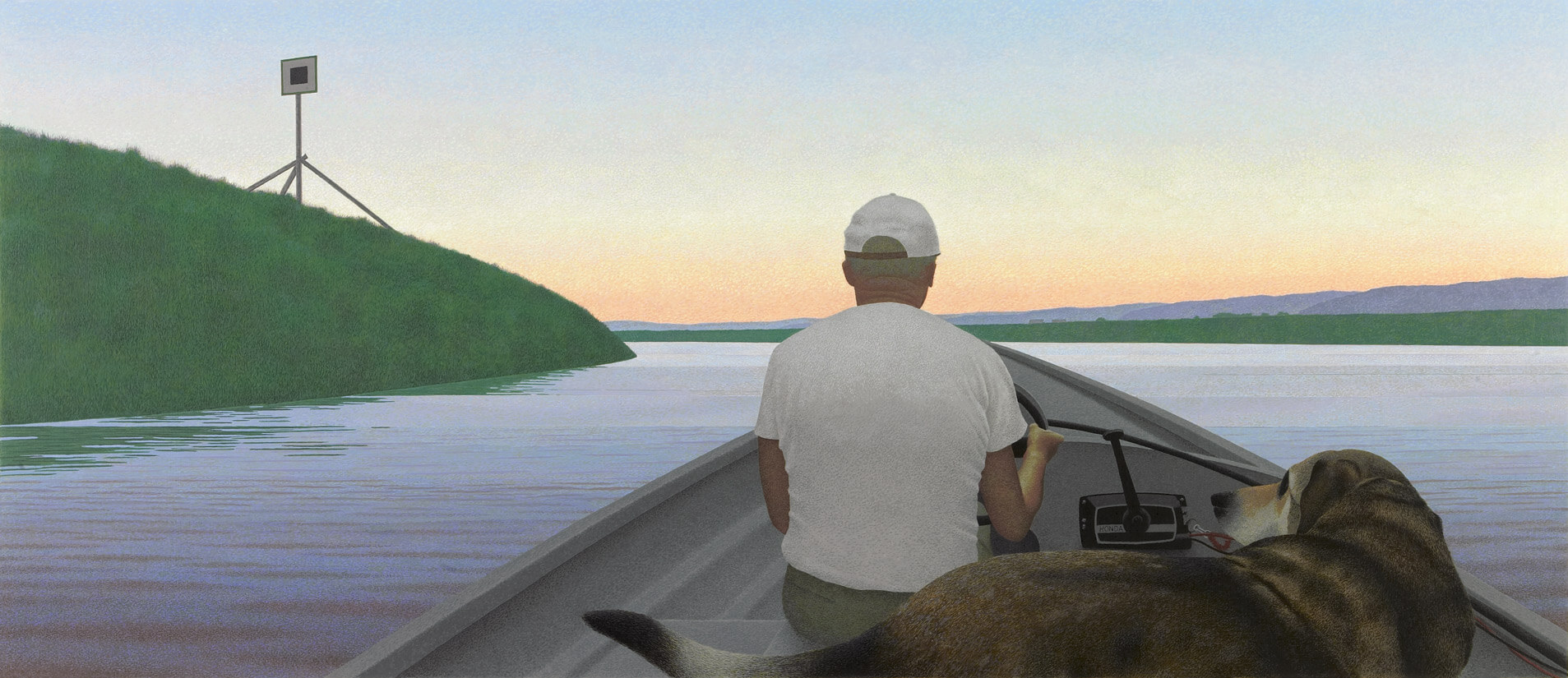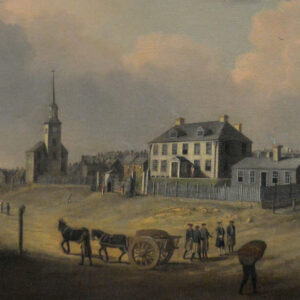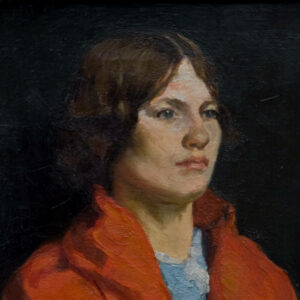Alex Colville (1920–2013)

Alex Colville, On a River, 1996
Acrylic polymer emulsion on hardboard, 48 x 110.8 cm
Private collection, Canada
Although Alex Colville never lived in Halifax, he was immensely important to the art history of the city, both in his example and in his work supporting key institutions, including the Nova Scotia College of Art and Design (from which he received an honorary degree in 1997). He served as honorary patron for the capital campaign that resulted in a new Art Gallery of Nova Scotia building in 1988 and was a lifetime honorary governor of the gallery.
-
Alex Colville, Ocean Limited, 1962
Oil and synthetic resin on Masonite, 68.5 x 119.3 cm
Art Gallery of Nova Scotia, Halifax -
Alex Colville, West Brooklyn Road, 1996
Acrylic polymer emulsion on hardboard, 40 x 56.5 cm
Private collection -
Alex Colville, Cyclist and Crow, 1981
Acrylic on Masonite, 70.6 x 100 cm
Montreal Museum of Fine Arts
But it was as an artist that Colville made his most enduring impact. Atlantic Realism, the style most associated with Colville, has been one of the most popular and enduring painting styles in the region, consistently commercially successful if not always critically so. Colville himself never liked the designation, frequently stating that he did not feel himself to be part of any artistic movement. Nonetheless, Halifax commercial galleries are dominated to this day by various iterations of Atlantic Realism, continuing the conservative landscape painting tradition long beloved of Halifax artists and collectors alike.
Colville came of age during the Second World War, and post-war he was strongly influenced by existentialism. “After the War,” Colville once told an interviewer, “I had this great desire to make sense out of life.” To make sense, he sought order. For Colville, that order was to be found in the people, places, and animals that made up his day-to-day life. But order’s opposite, chaos, always lurks at the edges of his seemingly benign images. “My work is pessimistic, but my life is happy,” Colville told the National Gallery of Canada magazine, “I see the human condition as tragic.” That wariness, despite his personal optimism, led Colville to paint shadows in every scene, always hinting that the carefully constructed balance and order depicted could fall apart with the least pressure.
Colville’s work is included in every major public collection in Canada, and many worldwide. Four nationally and internationally touring shows were organized of his work in his lifetime, the first by the Art Gallery of Ontario (AGO) in 1983. On his death, on July 16, 2013, the AGO was in the process of mounting a major retrospective curated by Andrew Hunter. The resulting exhibition, Alex Colville, opened in Toronto in 2014 and travelled to the National Gallery of Canada in 2015. Alex Colville died at his home in Wolfville, Nova Scotia.

 About the Author
About the Author
 More Online Art Books
More Online Art Books
 Acknowledgements
Acknowledgements